The Tanacu exorcism was a case in which Maricica Irina Cornici, an allegedly mentally ill nun at the Romanian Orthodox Church monastery of Tanacu in Vaslui County, Romania, was ruled to be killed during an exorcism in 2005 led by Father Daniel Petre Corogeanu and four Orthodox Christian nuns who were a part of the Order of the Holy Trinity. [1] The case was widely publicized in the Romanian media and following a lengthy trial, the priest was sentenced on appeal to 7 years, one nun to 6 years and the other three nuns to 5 years; [2] however, many of Tanacu's residents, including Cornici's brother, believed her to have suffered from demonic possession. [3] [4] The coroner Dan Gheorghiu maintained that the nun's cause of death was due to an overdose of adrenaline given in the ambulance. [5]
In the aftermath of the Romanian Revolution of December 1989, the Socialist Republic of Romania, which officially promoted state atheism, collapsed, resulting in the end of the persecution of Christians in Communist Romania, as well as the revival of Christian monasticism in the country. [3] In January 2005, 23-year-old Maricica Irina Cornici moved to the Tanacu monastery. [3] She was born into a broken family, and, following her father's suicide, she and her brother grew up in an orphanage. When she was 19, she worked as a nanny in Germany, and then for a family in Banat. [3] A friend of hers from the orphanage became a nun at the Tanacu monastery and she encouraged her to also become a nun. [3]
Soon after, she began giggling during Mass and, by April, her mental state deteriorated and the doctors at the local psychiatric hospital diagnosed her disease as schizophrenia. After a two-week treatment, they released her into the care of the monastery. [3] Cornici's friends also stated that she never exhibited any signs of mental illness. [3] Her brother testified that he was with her when he saw Satan go "into her" and also maintained that she suffered from demonic possession. [3]
Daniel Petre Corogeanu was the 29-year-old priest of the monastery. A decade before the events, he was a football player in Vaslui, his home town. He began following religious studies at the University of Iași after he could not secure admission in University of Bucharest, where he wanted to study sports or law. [3] A year later, a businessman from his home town recruited him to help build a monastery in the hills near the city. He was ordained by the local bishop, who expected that he would continue his studies. Nevertheless, he gave up his university education in order to devote himself to running the monastery. [3]
In 2003, Father Corogeanu had some disputes with the diocese. When the bishop came to read him the canon law, he argued that the rules were "19th century innovations" made by the Freemasonry. [3] The original community of monks dissolved as they left to become priests and, instead, Corogeanu organized a community of nuns, who were, according to all accounts, "completely devout to him". [3]
Father Corogeanu thought that it was not just a mental illness, but rather that Cornici was possessed by Satan. [3] He would later claim that "you can't take the Devil out of people with pills" and that an exorcism was necessary. [3]
In order to restrain her from violent movements including those causing her to hit herself, [1] the nuns bound her hands and feet and locked her in her room as they participated in the liturgy commemorating the Ascension of Jesus. A few days later, they chained her to a cross with her arms stretched and carried her into the church so that they could anoint her. [3] According to Sister Nicoleta Arcalianu, Cornici had been restrained in the same manner that others who were demonically possessed were; Sister Arcalianu stated that had Cornici not been restrained, she "could have either killed herself or killed someone else". [6] With regard to Cornici, Sister Arcalianu stated that "Irina knew that she was possessed by evil spirits because she was begging us to tie her up and help her." [6]
Her wrists and forehead were then anointed with holy oil and she was kept in the church for three days. [3] They put a towel into her mouth to stop her from cursing and prayed to cast out the Devil as they wet her lips with holy water. [3]
Cornici was then moved to her room and untied. She was, according to Father Corogeanu, "cured". She was later given bread and tea and fainted after eating. The nuns could not awaken her and sensed that her pulse was weak and as a result they called an ambulance. While in the ambulance, she was administered six doses of adrenaline. [5] By the time she reached the hospital, she was dead. [3]
The police were notified by the doctors at the hospital, who noticed the marks left on her wrists and ankles by the chains. The 2005 autopsy claimed that she had died of dehydration, exhaustion and a lack of oxygen. [3]
Father Corogeanu and the four nuns who helped him were charged with murder and depriving a person of liberty. [3] Prosecutors sought a life sentence for Corogeanu, but he was sentenced in 2007 to 14 years in prison, while the nuns (Nicoleta Arcalianu, Adina Cepraga, Elena Otel and Simona Bardanas) were sentenced to between 5 and 8 years. [4] [7] Many individuals were present in the courtroom to support Father Corogeanu and were distraught at the pronouncement of the verdict. [4] The Court of Appeals reduced his sentence to 7 years [8] and Corogeanu was freed on parole in November 2011 after serving two-thirds of his punishment. [9]
As Maricica Irina Cornici was lowered into her grave during her funeral, "claps of thunder were heard", leading Corogeanu to conclude "that the will of God has been done". [1]
The Romanian Orthodox Church closed down the monastery and had Corogeanu defrocked. [3]
In 2014, however, it was found that the cause of death was actually due to an overdose of adrenaline given in the ambulance with Coroner Dan Gheorghiu stating "'I was part of the team who handled the exhumation of the nun's body. ...It was concluded that the woman died of an overdose of adrenaline. Don't ask me, I don't know why the judges did not take that into account." [5] Fr. Corogeanu stated that "My biggest mistake was that I called the ambulance when I saw she was not moving. I think she died because the medics who came with the ambulance tried to resuscitate her by giving her too much adrenaline. Had I not called the ambulance, she would have been well now." [6]
In Tanacu, many people continue to maintain that Cornici was indeed possessed, rather than mentally ill, and that Corogeanu did his best to help her. [3] Veronica Tomulescu stated that "It's not as if they actually killed her. They didn't stab her or shoot her. They took her to the hospital alive." [3]
The 2012 movie Beyond the Hills directed by Cristian Mungiu was based on the novels written by Tatiana Niculescu Bran and inspired by the Tanacu case. The Crucifixion , released in 2017, is also based on Tanacu exorcism. [10]

Mother Joan of the Angels is a 1961 Polish nunsploitation horror film on demonic possession, directed by Jerzy Kawalerowicz, based on a novella of the same title by Jarosław Iwaszkiewicz, loosely based on the 17th century Loudun possessions. The film won the Special Jury Prize at the 1961 Cannes Film Festival.
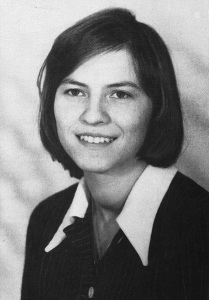
Anna Elisabeth "Anneliese" Michel was a German woman who underwent 67 Catholic exorcism rites during the year before her death. She died of malnutrition, for which her parents and priest were convicted of negligent homicide. She was diagnosed with epileptic psychosis and had a history of psychiatric treatment that proved ineffective.

Exorcism is the religious or spiritual practice of evicting demons, jinns, or other spiritual entities from a person, or an area, that is believed to be possessed. Depending on the spiritual beliefs of the exorcist, this may be done by causing the entity to swear an oath, performing an elaborate ritual, or simply by commanding it to depart in the name of a higher power. The practice is ancient and part of the belief system of many cultures and religions.
The Aix-en-Provence possessions were a series of alleged cases of demonic possession occurring among the Ursuline nuns of Aix-en-Provence in 1611. Father Louis Gaufridi was accused and convicted of causing the possession by a pact with the devil, and he was tortured by strappado and his bones dislocated. He was then executed on April 1611 by strangulation and his body burned. This case provided the legal precedent for the conviction and execution of Urbain Grandier at Loudun more than 20 years later. This event led to possessions spreading to other convents and a witch burning in 1611.
The possessions at Louviers, similar to those in Aix-en-Provence, occurred at the Louviers Convent in 1647. As with both the Aix case and its later counterpart in Loudun, the conviction of the priests involved hinged on the confessions of supposed possessed demoniacs.

The Loudun possessions, known in French as the Possessed of Loudun Affair, was a notorious Witchcraft trial that took place in Loudun, Kingdom of France, in 1634. A convent of Ursuline nuns said they had been visited and possessed by demons. Following an investigation by the Catholic Church, a local priest named Urbain Grandier was accused of summoning the evil spirits. He was eventually convicted of the crimes of sorcery and burned at the stake.
The trial of Arne Cheyenne Johnson, also known as the "Devil Made Me Do It" case, is the first known court case in the United States in which the defense sought to prove innocence based upon the defendant's claim of demonic possession and denial of personal responsibility for the crime. On November 24, 1981, in Brookfield, Connecticut, Arne Cheyenne Johnson was convicted of first-degree manslaughter for the killing of his landlord, Alan Bono.
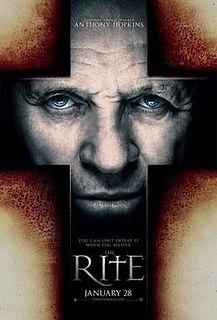
The Rite is a 2011 supernatural horror film directed by Mikael Håfström and written by Michael Petroni. It is loosely based on Matt Baglio's book The Rite: The Making of a Modern Exorcist, which itself is based on actual events as witnessed and recounted by American then-exorcist-in-training Father Gary Thomas and his experiences of being sent to Rome to be trained and work daily with veteran clergy of the practice.
Clara Germana Cele was a South African Christian girl, who in 1906, was said to be possessed by a demon.
In the late 1940s, in the United States, priests of the Roman Catholic Church performed a series of exorcisms on an anonymous boy, documented under the pseudonym "Roland Doe" or "Robbie Mannheim". The 14-year-old boy was the alleged victim of demonic possession, and the events were recorded by the attending priest, Raymond J. Bishop. Subsequent supernatural claims surrounding the events were used as elements in William Peter Blatty's 1971 novel The Exorcist. In December 2021, The Skeptical Inquirer and The Guardian reported the purported true identity of Roland Doe/Robbie Mannheim as Ronald Edwin Hunkeler.

In Christianity, exorcism involves the practice of casting out one or more demons from a person whom they are believed to have possessed. The person performing the exorcism, known as an exorcist, is often a member of the Christian Church, or an individual thought to be graced with special powers or skills. The exorcist may use prayers and religious material, such as set formulas, gestures, symbols, icons, or amulets. The exorcist often invokes God, Jesus, angels and archangels, and various saints to aid with the exorcism. Christian exorcists most commonly cast out demons in Jesus' name.

The Catholic Church authorizes the use of exorcism for those who are believed to be the victims of demonic possession. In Roman Catholicism, exorcism is a sacramental but not a sacrament, unlike baptism or confession. Unlike a sacrament, exorcism's "integrity and efficacy do not depend ... on the rigid use of an unchanging formula or on the ordered sequence of prescribed actions. Its efficacy depends on two elements: authorization from valid and licit Church authorities, and the faith of the exorcist." The Catechism of the Catholic Church states: "When the Church asks publicly and authoritatively in the name of Jesus Christ that a person or object be protected against the power of the Evil One and withdrawn from his dominion, it is called exorcism."

Beyond the Hills is a 2012 Romanian drama film directed by Cristian Mungiu, starring Cristina Flutur and Cosmina Stratan. The narrative follows two young women at an Eastern Orthodox convent in Romania.

Tristana Medeiros Da Souza, known in Spanish as La Niña Medeiros is a fictional character and main antagonist of the REC film series. Created by Jaume Balagueró and Paco Plaza, Medeiros was introduced in the first film and had an expanded role in REC 2. She also makes a cameo appearance in REC 3: Genesis that reveals her as the root cause of the demonic outbreak. Her origins are told by the character itself in the comic book REC: Historias Ineditas, released in 2012 alongside Genesis. Medeiros is primarily portrayed by Spanish actor Javier Botet in the series.
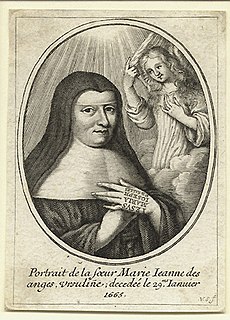
Jeanne des Anges, also known as Jeanne de Belcier, was a French Ursuline nun in Loudun, France. She became mother superior of the convent at a young age, but is chiefly remembered as a central figure in the case of the possessed of Loudun in 1632, which led, after witch trials, to the burning at the stake of the priest Urbain Grandier two years later.
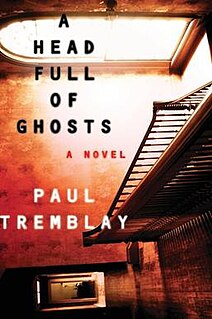
A Head Full of Ghosts is the fourth horror novel by American writer Paul G. Tremblay. The plot involves an American family from Massachusetts under financial and emotional strain when their fourteen-year-old daughter, Marjorie Barrett, exhibits signs of severe mental illness. The story is told from the point of view of Marjorie's eight-year-old sister, Meredith "Merry" Barrett. However, the point of view also has another layer, as Merry's story is told in flashbacks. She is a 23-year-old now and is telling her story to a writer named Rachel Neville. Themes include elements of Catholic exorcism and reality television exploitation. Several reviewers noted plot and thematic similarities to Shirley Jackson's "We Have Always Lived In The Castle" as well as the same name of the protagonists. Tremblay dedicated the novel to Jackson.
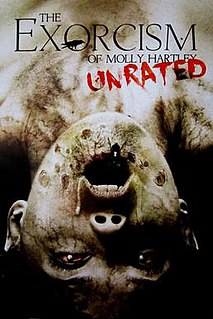
The Exorcism of Molly Hartley is a 2015 American supernatural horror film written by Matt Venne and directed by Steven R. Monroe. The film is a sequel to the 2008 film The Haunting of Molly Hartley. It was released on Digital HD on October 9, 2015, and on Blu-ray on October 20, 2015.
Marina Hociotă, also known as Mina Hociotă, was a Romanian nun who acted as a front line nurse during World War I.

The Crucifixion is a 2017 horror film directed by Xavier Gens, written by Chad Hayes and Carey W. Hayes and starring Sophie Cookson, Brittany Ashworth and Corneliu Ulici. It is based on the Tanacu exorcism that took place in Vaslui County, Romania, in 2005.
Karem the Possession is a 2021 Mexican supernatural horror film directed by Henry Bedwell and produced by Rigoberto Castañeda and his company Videocine. In the film plot, Karem, the youngest member of an atheist family is possessed by a dangerous demon who grants her dreadful abilities. Based loosely on a real-life case of demonic possession, initially scheduled for a 2020 premiere date and after being in production for six years. The movie was eventually released on December 30th, 2021, in Mexico, where it grossed $792,795 USD but was criticized by the critics because of its direction, plot and acting.
Dozens of Corogeanu's supporters packed the courtroom and prayed for the priest, with several bursting into tears when the verdict was announced.
They untied her and gave her bread and tea. She passed out after eating. The nuns appointed someone to get an ambulance, which arrived around 2:00 p.m. The ambulance doctor gave Cornici six doses of adrenaline and took her to the hospital.